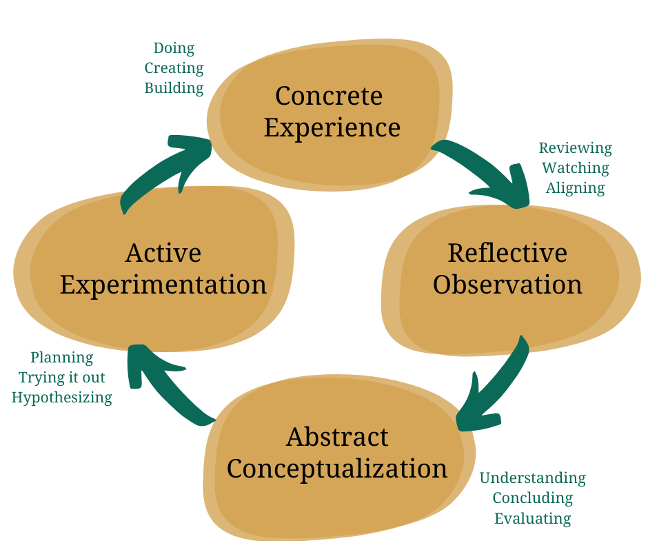Resources
Integrating experiential learning in your courses can present new ways for students to apply their knowledge.
- STU's Best Practices and Recommendations for Experiential Learning
- Grants and Funding for Experiential Learning
- Experiential Learning Resource Bibliography
- Remote Experiential Learning
- Student Travel and Fieldwork Safety Policy
Kolb’s Experiential Learning Cycle
Kolb’s (1984) experiential learning cycle model is widely used in theoretical frameworks in education. The model is grounded in a constructivist, humanistic, and developmental perspective of learning. It is possible for the learner to enter at any of these four stages and follow them through their sequence to acquire new knowledge. However, for meaningful learning to occur, all stages in the cycle must be addressed.

Experiential Learning Types
For the purpose of our certificate in experiential learning and community engagement, courses which have an off-campus component can count towards it. However, experiential education can come in many different forms that provide valuable learning to students. Below are a few examples of experiential learning at our university:
Service Learning: This form of experiential education is characterized by all of the following:
- student participation in an organized service activity
• participation in service activities connected to specific learning outcomes
• participation in service activities that meet identified community needs
• structured time for student reflection and connection of the service experience to learning - Supporting Newcomers to Canada: STUdents Participate in Service Learning at Saint John Newcomers Centre
International Field Trip Experiences: Immersive short-term and long-term experiences outside of Canada in which students can apply the academic theory in an international setting. Students can explore, study, and reflect, while being guided by their professor and the environment.
Field Trips: Opportunities for incorporating outside experiences within a course syllabus. This may take the form of field trips to relevant locations, or it may be more project-based field work with students regularly visiting or working at one site as part of a course project.
Applied Research Projects: Incorporating applied learning opportunities in research method coursework can improve the understanding of skills learned for students. Courses can include observations, interviews, and other techniques like analyzing data and leading focus groups.
Work-Integrated Learning: Work-integrated learning is defined by CEWIL Canada as a model and process of curricular experiential education which formally and intentionally integrates a student’s academic studies within a workplace or practice setting. Experiential learning types that integrate with a workplace can fall under this category as well. Some types of work-integrated learning include:
- Internships
- Practicum Placements
- Work-study projects
- Entrepreneurship
- Consulting and Research Projects
Benefits of experiential learning for students:
- Improved higher-order thinking skills and demonstrations of greater complexities of understanding
- Helps students relate to concepts directly
- Links theory to practice allow students to see how in-class concepts are applied
- Increases students’ engagement and pro-social behaviours
- Assists in memory retention and strengthens the connection between feelings and thinking processes
- Development of skills for lifelong learning
- Encourages reflection and analytical thought
